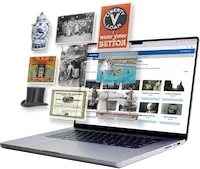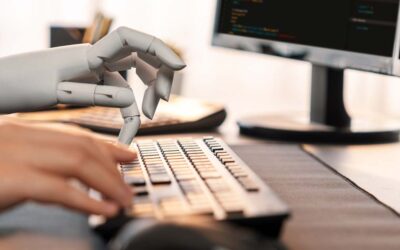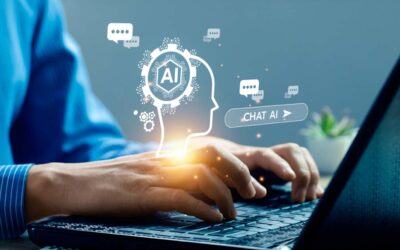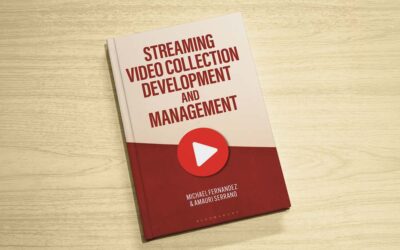Texas Archive of the Moving Image: Interview with the Digital Archivist
Lauren Hays
I recently interviewed Grace Muñoz about her work at the Texas Archive of the Moving Image. Her work on improving the discoverability of the multimedia collection is fascinating.
Please introduce yourself to our readers.
My name is Grace Muñoz, and I am a digital archivist at the Texas Archive of the Moving Image (TAMI). I have been working remotely at TAMI for over two years while based in Los Angeles. In addition to my experience with digital archives, I also work in digital asset management.
What can you share about your current job?
At TAMI, I have been working on a special project that helps support the institution’s non-profit mission. The project involves cataloging more than 3,000 video and audio recordings from an Austin-based multimedia conference/festival.
How did you prepare for this role?
My interest in film and history led me to pursue a graduate degree in Library and Information Science (MLIS) at UCLA. My MLIS specialization was in Media Archival Studies, which is very broadly, the preservation of audiovisual material. During my time at UCLA, most of my professional experiences took place remotely due to the COVID-19 pandemic. This meant that there were limited opportunities for physical archival processing and, instead, more opportunities to work remotely with digital collections. Consequently, I developed knowledge and expertise in cataloging and digital asset management—pertinent skills for a digital archivist.
What knowledge and skills are particularly useful in your job?
Since my position at TAMI is cataloging-focused, a strong understanding of archival description and metadata is necessary. For this project, I created an Airtable database with a custom metadata schema and controlled vocabularies that would best describe the properties of audiovisual recordings with conference/festival content.
To improve the discoverability of the collection, I also conducted extensive research on various topics related to the conference/festival and utilized sources such as old conference guides, archived conference web pages found on the Internet Archive’s Wayback Machine, and digitized local newspapers made available online. The information I found through my research allowed me to provide additional context to these recordings, many of which came with no metadata that could help identify the people or events in the recording.
What knowledge and skills do you think digital archivists will need in the future?
To keep up with technological advances, digital archivists will need to learn and develop coding and scripting skills. This has already started becoming prevalent among practitioners who seek to create efficiencies in their workflows. Python, in particular, has become a popular tool among archivists because it can be used with a wide range of digital preservation tools. By becoming adept at coding and scripting, archivists can grow their skills to accommodate emerging technological developments.
Archivists will also need to become familiar with processing born-digital material because it has become the most dominant form of information, and it will only continue to grow as this century progresses.
For others interested in working in digital archives, what advice do you have?
I recommend getting as much experience as possible working with archival collections, whether it be through internships, volunteering, or other opportunities. To advance in the profession, consider obtaining an MLIS degree or other relevant graduate degree.
It is also important to participate in professional organizations and expand your network. Some organizations that I recommend as a good starting point are the Association of Moving Image Archivists (AMIA), the Society of American Archivists (SAA), and for those in California, the Society of California Archivists (SCA). As a member of these organizations, I presented at conferences, wrote about my work, participated in a committee as an early career member, and joined various mentorship programs. By being an active member of a professional organization, I was able to stay up to date on the latest developments in the profession and meet others with similar professional goals and interests.
Is there anything else you would like to share?
One threat affecting the safeguarding of audiovisual material is the “magnetic media crisis.” Since magnetic media has a limited life expectancy of roughly 10-30 years, many of these recordings are fast approaching or have surpassed their intended expectancy. The inevitable degradation of magnetic media, along with playback obsolescence, puts the content of these recordings at risk of being lost to time.
Most of the recordings I cataloged at TAMI were digitized from a collection of magnetic media that included the formats MiniDV, VHS, DAT, Cassette, and U-matic. During the digitization process, the content from about 5% of the collection was unrecoverable, and a select few tapes showed damage to the content of the recording that affected its viewability. Therefore, it is of great urgency for institutions containing audiovisual material to audit their collections for at-risk media and to create a plan that takes into consideration digitization as a means of preserving audiovisual content.
Lauren Hays
Dr. Lauren Hays is an Assistant Professor of Instructional Technology at the University of Central Missouri and a frequent presenter and interviewer on topics related to libraries and librarianship. Please read Lauren’s other posts relevant to special librarians and learn about Lucidea’s powerful integrated library systems, SydneyDigital and GeniePlus, used daily by innovative special librarians in libraries of all types, sizes and budgets.
**Disclaimer: Any in-line promotional text does not imply Lucidea product endorsement by the author of this post.
Never miss another post. Subscribe today!
Similar Posts
Growing Your Leadership Skills: 7 Tips for Special Librarians
Great library leaders aren’t born—they’re made through learning self-reflection and practice. Here are seven strategies to help you grow and lead with impact.
Keeping Up with Copyright and Generative AI: What Special Librarians Need to Know
As generative AI becomes more prevalent copyright law is evolving to address its impact. A new report from the U.S. Copyright Office provides guidance on what is (and isn’t) copyrightable.
Understanding Shadow AI: Risks Costs and Governance
AI can enhance search discovery and efficiency but unsanctioned adoption—known as “shadow AI”—can lead to budget overruns and compliance risks. Here’s how to evaluate AI pricing models and build a governance strategy that balances innovation with cost control.
Interview with an Author: Fernandez on Streaming Video Collection Development
As demand for streaming video in libraries grows so do the challenges of managing access budgets and licensing. Co-author Michael Fernandez shares key insights from his book “Streaming Video Collection Development and Management”.







Leave a Comment
Comments are reviewed and must adhere to our comments policy.
0 Comments